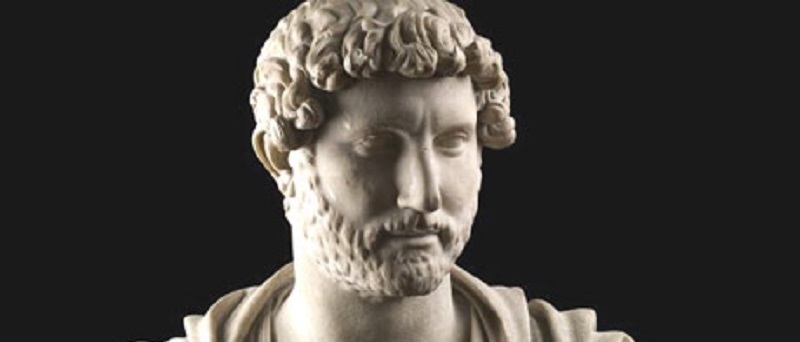Emperor Hadrian
Posted on 26th December 2020
Born ‘Publius Aelius Hadrianus Buccellanus’ on 24 January 76AD; well educated at home he was very fond of Greek. At ten years old his parents died and Hadrian became the ward of both Trajan and Publius Acilius Attianus. He was to visit Rome for the first time four years later.
Trajan instigated a military career for Hadrian and he became tribune to emperor Nerva at a young age.
In 100AD Hadrian married Trajan’s grand-niece Vibia Sabina, a marriage of convenience arranged by empress Plotina; Trajan however was not so keen on this marriage.
Emperor Nerva died in 101AD, and was succeeded by Trajan. This change in emperor became the start of Hadrian’s political career. He would read Trajan’s speeches to the senate, and is believed to have written them as well.
Hadrian became tribune of the plebians in 105AD and consul in 108AD. He also served with Trajan in both the first and second Dacian wars, and held many other governmental positions.
While on campaign with Trajan in 117AD, Trajan became ill and set out to return to Rome, leaving Hadrian behind in charge of Syria.
Trajan only made it as far as Selinus in Turkey. While on his deathbed, he adopted Hadrian as his son and heir.
There has been speculation that Trajan died without naming an heir, however empress Plotina is believed to have sent letters to Rome claiming Hadrian was the new heir. These letters were signed by Plotina not by Trajan, but they were to secure Hadrian’s rule.
Emperor 117AD – 138AD
When named emperor, Hadrian did not immediately return to Rome. Many in Rome did not believe him the rightful heir and plotting against him, four high ranking senators were murdered. When Hadrian did return to Rome, his relationship with the senate was strained.
Hadrian visited Gaul in 121AD followed by further provinces including Spain, Turkey and Britain, he did not return to Rome until 134AD; he was to spend nearly half of his reign away from Rome. He implemented a huge rebuilding project across all of his provinces, including rebuilding temples and complete cities.
Hadrian rebuilt the Pantheon after it had been destroyed a second time by fire in 110AD; this is now the most well-preserved building of ancient Rome and can be visited today. He also built the Temple of Venus and Roma. In northern Britain he built a stone wall, approximately 73 miles (117 km) in length, this is Hadrian’s Wall, and can still be walked today.
A huge lover of Greek culture and philosophy, Hadrian spent much of his time in Greece; he did however return to Rome in his final years.
Hadrian fell very ill and retired to his villa at Baiae on the Bay of Naples. He died soon afterwards on 10 July 138AD, of a heart attack or heart failure, naming Antoninus Pius as his successor.
Tagged as: Junior Ancient Rome
Share this post:





